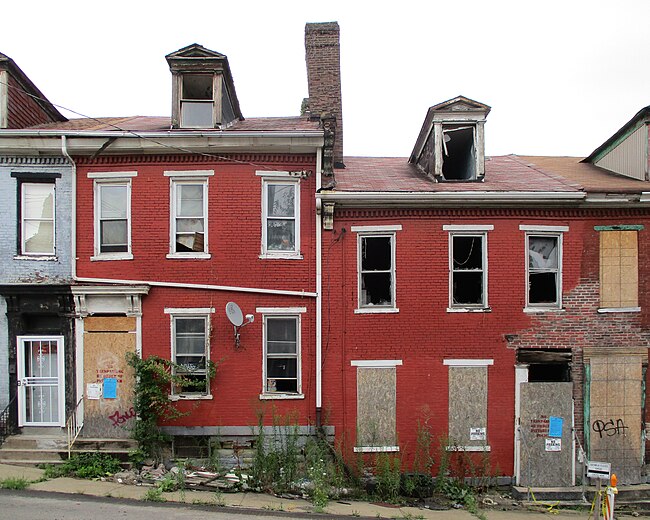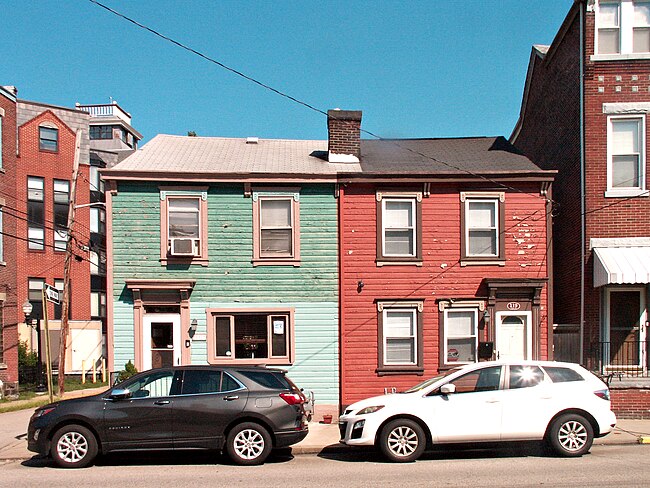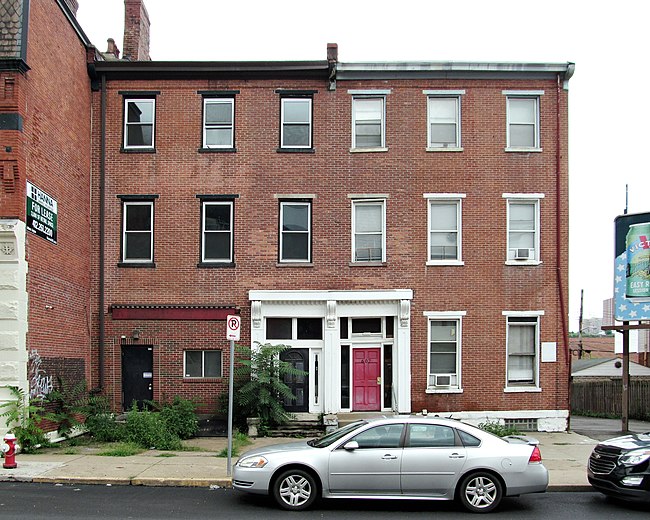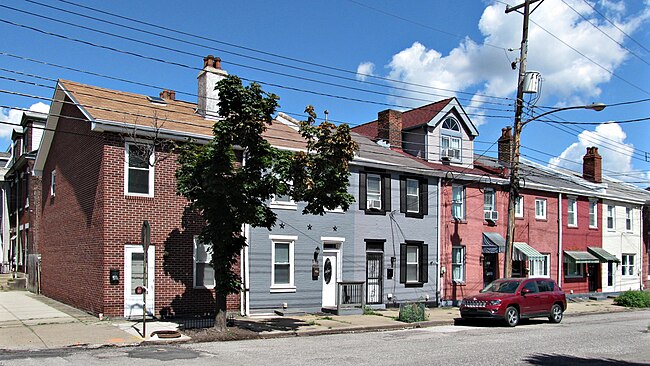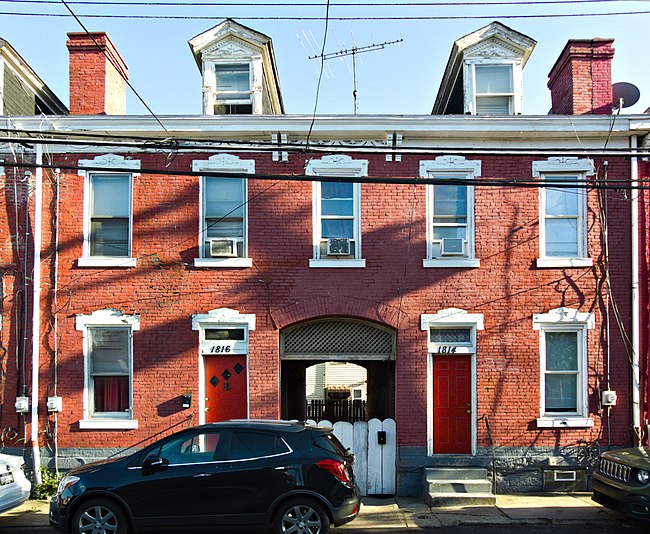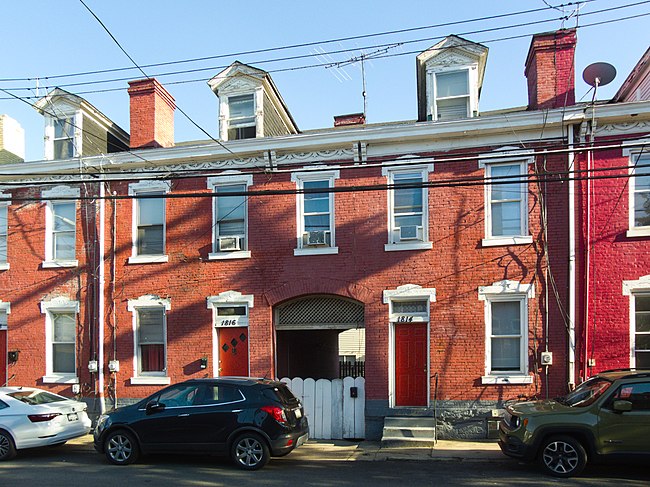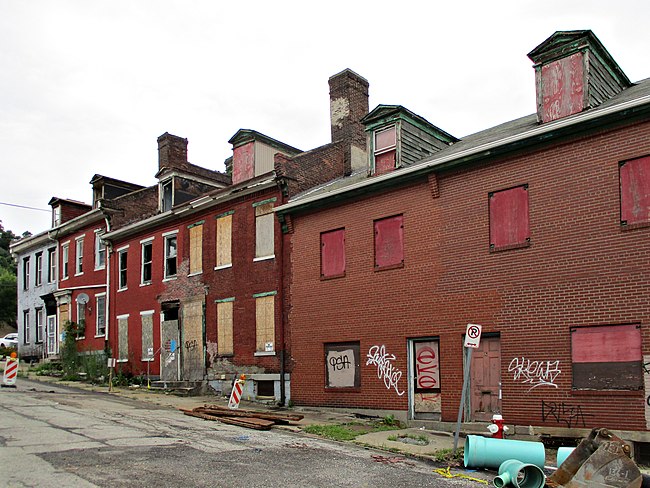
Uptown is a good-news/bad-news sort of neighborhood right now. The good news is that, after decades of gradual abandonment and decay, the neighborhood is rapidly turning upward. The bad news is that much of the neighborhood is still in danger. The Soho end of Uptown, near the Birmingham Bridge, is not yet feeling the effects of the prosperity radiating from the new arena, the restoration of Fifth Avenue High School, and the proximity of downtown to the western end of Uptown.
Here is a row of houses on Seneca Street that probably will not be here much longer. The blue CONDEMNATION stickers have appeared on several of them. These are houses from the Civil War era, which are not as common as they used to be. A few more such rows remain Uptown, and some of those are also in danger—either from decay or from the even more dangerous force of prosperity. On two of these houses, the façades have been replaced with architecturally worthless curtains of brick; but the remaining four retain many of their original features.
Until recently, it was inevitable that condemned houses like these would be razed to leave an empty space behind them. Now it is just possible that at least the space will not be empty forever. That would be moderately good news; unfortunately, the rolling waves of prosperity will not reach Seneca Street in time to make it profitable to save these houses. A century and a half of history will vanish, and almost no one will notice. But at least these pictures will serve as a memorial and a document.

